Selective use of egg yolk binder
Artists' Materials
With few exceptions, egg yolk was only used as a paint binder for the images painted within the historiated initials and for the human figures in the borders: angels, cherubs (putti), the Cardinal’s portraits and the caricature-like heads.
This suggests a rigorous, hierarchical division of labour between the main artists, who painted the figures within initials and borders, and their assistants, who provided the ornamental parts of initials and borders. This paradigm is consistent with the results of technical analyses carried out on other contemporary manuscripts decorated by these and other artists, who gathered around the celebrated panel painter and illuminator Lorenzo Monaco. It is worth noting that blue areas painted with precious ultramarine never contain egg yolk, probably to avoid altering the pigment’s purple-blue hue by the addition of a dark yellow binder.
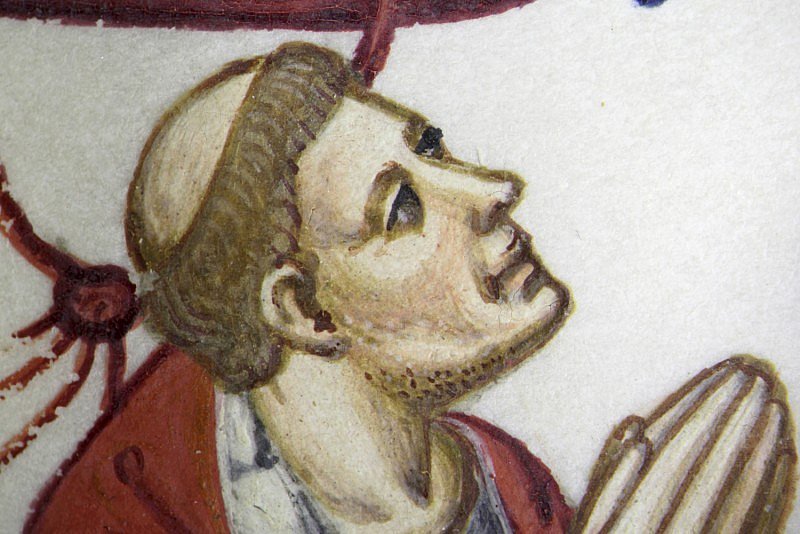
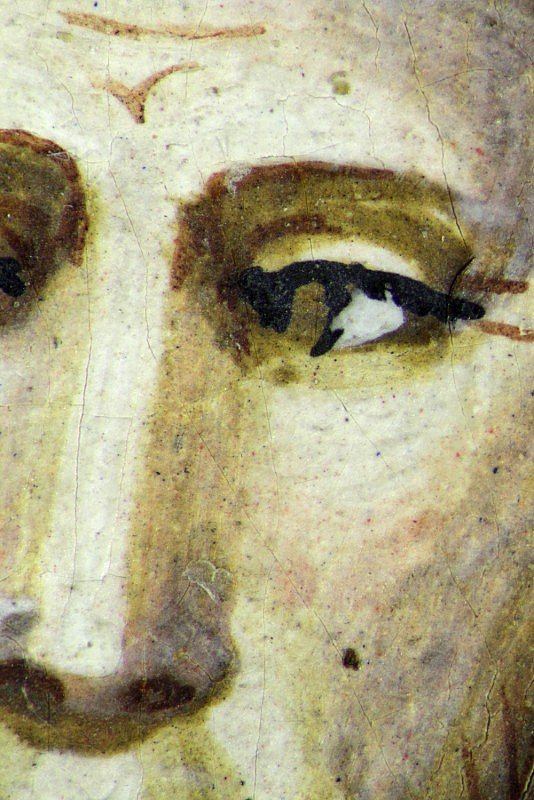
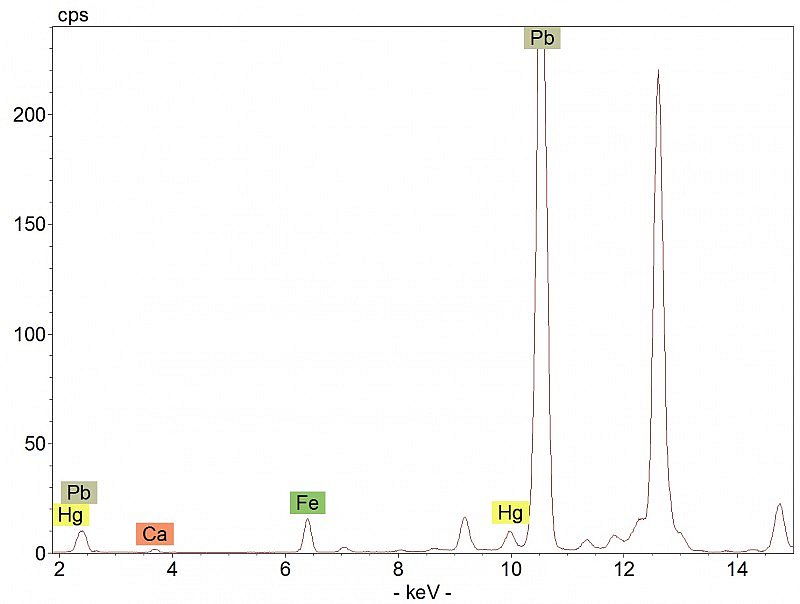
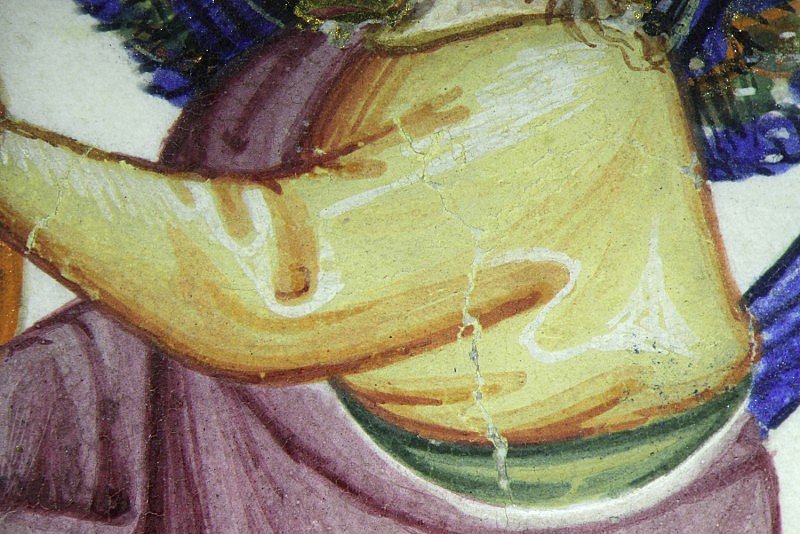
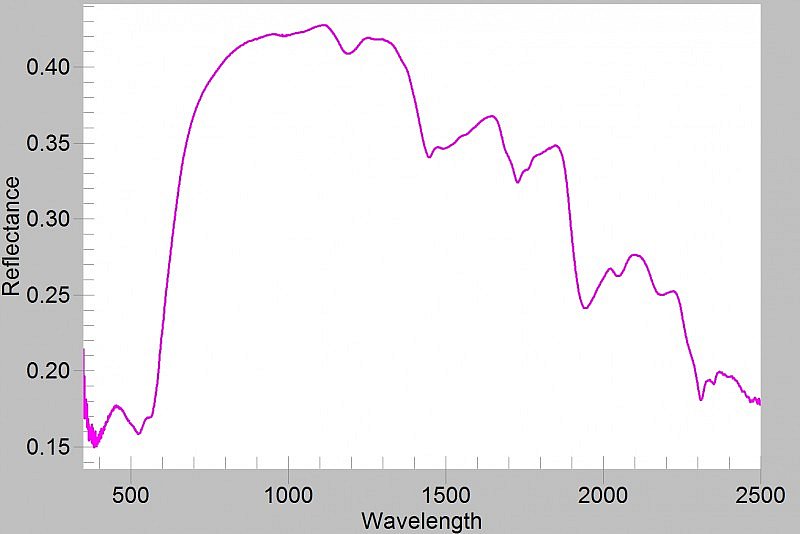
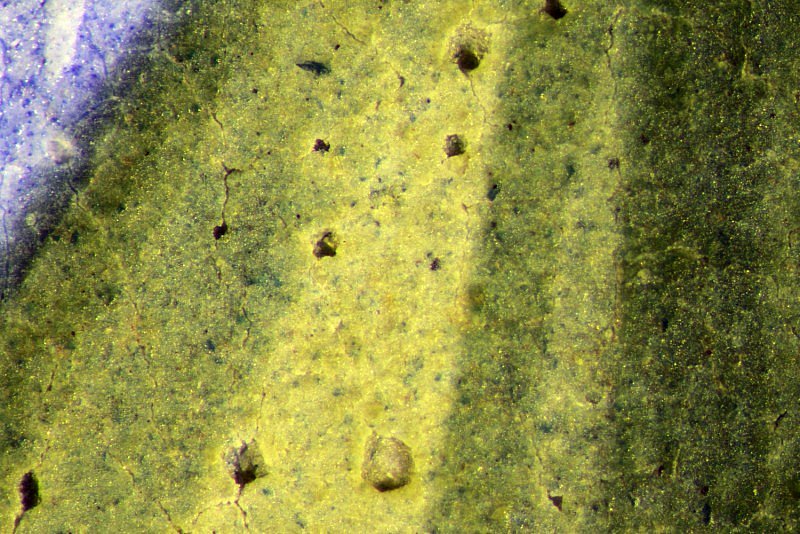
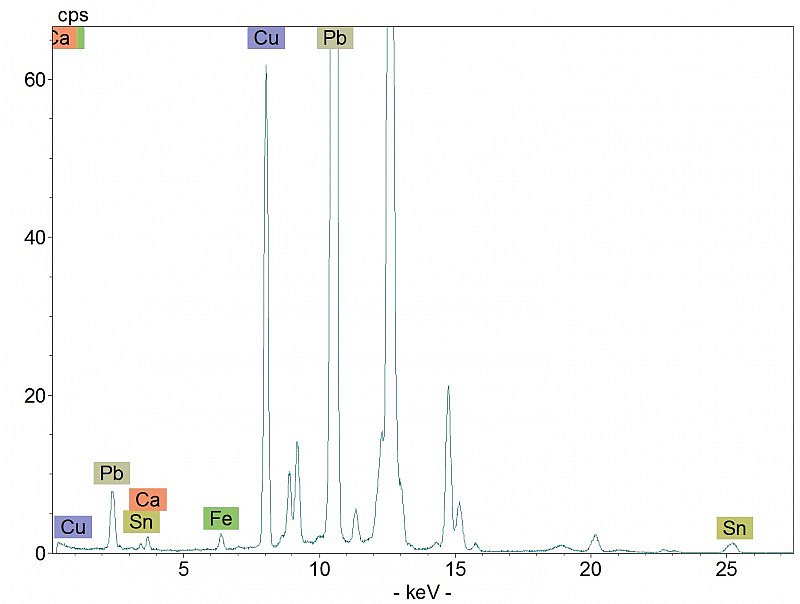
Historiated initial A with Christ blessing and border with Angelo Acciaiuoli’s portrait and arms (Mass for Advent Sunday)
The elegant figures with delicate faces are representative of Hand A. The complex modelling and careful blending of the flesh tones demonstrate his remarkable technical skill (hotspots 1 and 2). He used egg yolk as a binder to paint the figures, both in the miniature and in the border (hotspot 3), and favoured mixtures of azurite with yellow pigments to obtain green hues (hotspot 4).